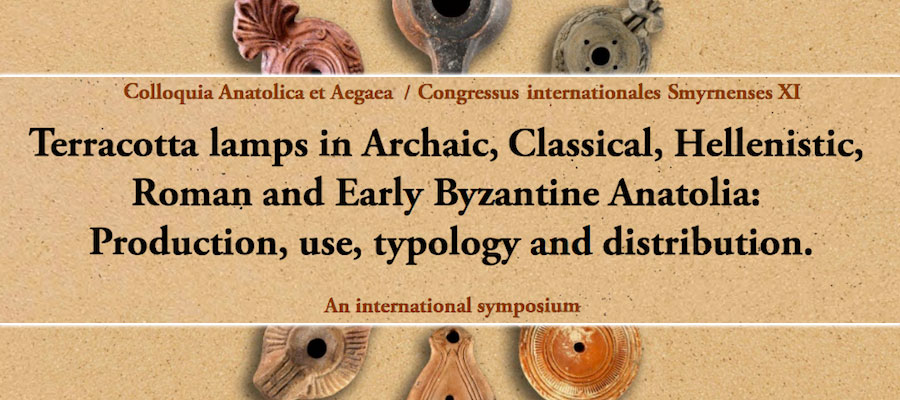Terracotta Lamps in Archaic, Classical, Hellenistic, Roman and Early Byzantine Anatolia: Production, Use, Typology and Distribution: An International Symposium, Dokuz Eylül University (DEU), Izmir, May 16–17, 2019
Ancient oil lamps, especially produced by clay, were found in relatively large quantities in entire Anatolia, where they were produced between the Bronze Age and Medieval periods. So far the study of this implement has been overlooked in Anatolia whereas there is still a huge amount of unpublished material from excavations, field surveys and museums in Turkey. Ancient Anatolian oil lamps can be categorized based on different criteria, including material (terracotta, bronze, glass, lead and stone etc.), production (wheel-made or mould-made), typology, fabric, decoration, production, use and distribution. During the Archaic and Classical periods (i.e. seventh to mid-fourth century B.C.) handleless, round, wheel- made terracotta oil lamps were produced locally especially in the western Anatolia or imported in large scale. During the Hellenistic and Roman periods Anatolian lamps were produced more frequently as mould-made and typologically they have numerous varieties. In these periods oil lamps were utilised for profane and religious purposes, especially as tomb votives. During the mid-sixth/early seventh century A.D. the form of lamps was changed in Anatolia radically. In recent years some chemical analyses done within these objects yielded several results for the oil sorts used in these instruments.
In this symposium we only focus on terracotta lamps from Anatolia between c. early sixth century B.C. and early seventh century A.D., and attempt to set out a comprehensive model for the study of terracotta lamps, including their definition, typology, chronology, contexts, function, regional characteristics, and distribution patterns in Anatolia and of Anatolian lamps in the whole Mediterranean geographies, including whole eastern Mediterranean, Black Sea area, Roman provinces in the western Mediterranean, north of Alps (Germania and Britannia etc.) and north Africa. It is also our intention to create a complete bibliography of previous publications on Anatolian terracotta lamps. Our symposium deals only with terracotta oil lamps and not other lamps produced by bronze, glass, lead and stone etc.
